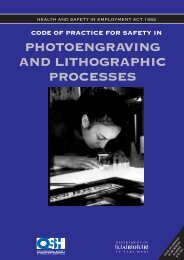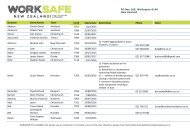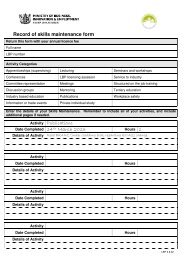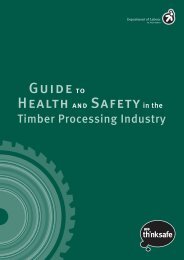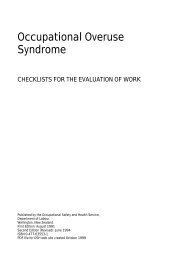Annual Report 2012 - Business.govt.nz
Annual Report 2012 - Business.govt.nz
Annual Report 2012 - Business.govt.nz
You also want an ePaper? Increase the reach of your titles
YUMPU automatically turns print PDFs into web optimized ePapers that Google loves.
• asthma induced by work exposures carries a high risk of progression to chronicasthma• there is evidence that the extent of occupational asthma can be reduced by reducingthe airborne concentration of the causative agents.The current programme of MBIE to investigate dirty workplace air is a practical response tothe accumulating evidence relating to the causes of work-related asthma.In New Zealand, a debate frequently occurs regarding work-aggravated asthma (WAA), andwork-induced asthma (occupational asthma), largely related to whether a compensationclaim is accepted or not. While this debate may be relevant to the issue of compensation, itis clearly not relevant to reducing and minimising the impact of asthma at work. This isbecause both work-aggravated and work-induced asthma are a consequence of exposure todirty workplace air, and the outcome of both types of asthma is seen in lost time from work.The possibility is that what begins as asthma may in time, if exposure continues, lead to alack of reversibility and the development of chronic obstructive pulmonary disease.In confirming a case of occupational asthma, the Panel requires the following:• a diagnosis of asthma• asthma occurring for the first time at work (work-induced asthma) or asthma madeworse at work (work-aggravated asthma)• a work history of exposure to an asthmagen or to a substance that can irritate therespiratory tract• supportive peak flow records indicating a temporal relationship between work andsymptoms/peak flow• evidence of reversibility.Case study – smelter asthmaSmelter asthma has been reported since the 1960s with cases occurring predominantly insmelter potrooms, where the reduction of alumina to aluminium takes place. This occurs inelectrolytic ‘pots’, hence the alternative name ‘potroom’ asthma. These ‘pots’ have a steelshell, heat insulating materials, a carbon cathode lining, a pool of molten aluminium metal,and an overlying cryolite bath containing dissolved alumina with a pre-baked carbon rodsuspended in the bath.The pots are arranged in lines (‘pot lines’) in rooms (‘pot rooms’), and a direct current ofover 150,000A is passed through the pots. This process releases oxygen from the alumina,leaving behind the molten aluminium metal.The pots are hooded with fume extraction, but sections of the hood have to be opened formaintenance and other activities, so gases, dusts and fumes from the process enter theworkplace.The symptoms of smelter asthma consist of difficulty in breathing, wheezing, chest tightnessand cough, and diagnosis is confirmed by spirometry and a history. Symptoms rarely appearless than two weeks after first exposure, and more usually after several months. Initially,they disappear when away from work, reappearing when back in the workplace.Over the period 1991-2000, the incidence of occupational asthma was investigated in sevenaluminium smelters in Australia (six) and New Zealand (one). The number of new casesAsbestos and other Occupational Lung Diseases in New Zealand <strong>2012</strong> <strong>Annual</strong> <strong>Report</strong> Page 28


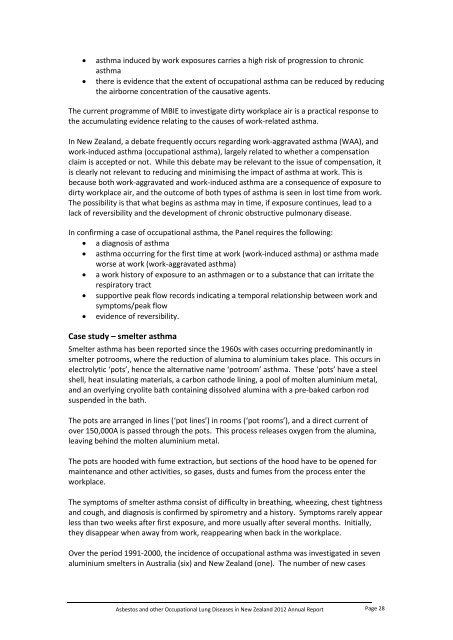

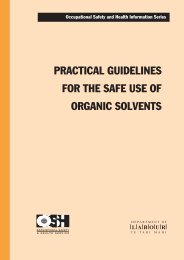
![Task analysis worksheet [161 KB PDF] - Business.govt.nz](https://img.yumpu.com/51400981/1/190x135/task-analysis-worksheet-161-kb-pdf-businessgovtnz.jpg?quality=85)
